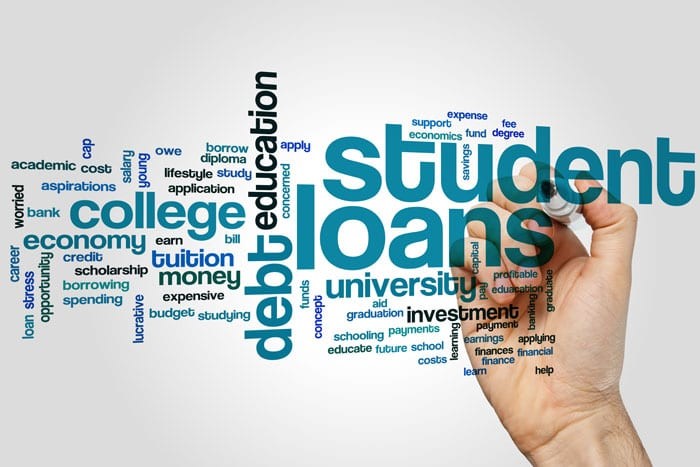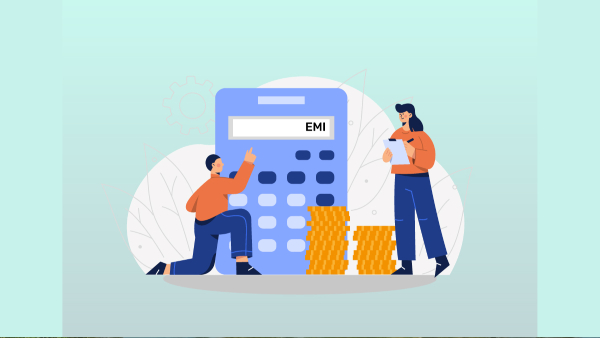-
Table of Contents
“Navigate your way to financial freedom with our expert guidance on student loans and debt repayment plans.”
Navigating Student Loans and Debt Repayment Plans can be a complex and overwhelming process for many individuals. With the rising cost of education, student loans have become a common means of financing higher education. However, understanding the various types of loans, repayment options, and strategies for managing debt is crucial for borrowers. This introduction aims to provide a brief overview of the topic and highlight the importance of informed decision-making when it comes to student loans and debt repayment plans.
Understanding Different Types of Student Loans
Navigating Student Loans and Debt Repayment Plans
Understanding Different Types of Student Loans
When it comes to financing higher education, student loans have become a common solution for many individuals. However, the world of student loans can be complex and overwhelming, with various types of loans and repayment plans available. In this article, we will explore the different types of student loans and help you gain a better understanding of how they work.
Federal Student Loans
One of the most common types of student loans is the federal student loan. These loans are offered by the U.S. Department of Education and come with several benefits. Federal student loans typically have lower interest rates compared to private loans, and they offer flexible repayment options. There are two main types of federal student loans: Direct Subsidized Loans and Direct Unsubsidized Loans.
Direct Subsidized Loans are available to undergraduate students with financial need. The government pays the interest on these loans while the borrower is in school, during the grace period, and during deferment periods. On the other hand, Direct Unsubsidized Loans are available to both undergraduate and graduate students, regardless of financial need. Unlike subsidized loans, interest accrues on unsubsidized loans from the time they are disbursed.
Private Student Loans
In addition to federal student loans, private student loans are another option for financing education. Private loans are offered by banks, credit unions, and other financial institutions. Unlike federal loans, private loans are not backed by the government and typically have higher interest rates. Private loans may require a credit check and a co-signer, especially for students with limited credit history or income.
It’s important to carefully consider the terms and conditions of private loans before borrowing. While they may offer more flexibility in terms of loan amounts, private loans often lack the borrower protections and repayment options provided by federal loans. It’s crucial to compare interest rates, repayment terms, and fees from different lenders to find the best option for your situation.
PLUS Loans
Another type of federal student loan is the Parent PLUS Loan. These loans are available to parents of dependent undergraduate students. Unlike other federal loans, PLUS Loans require a credit check. Parents can borrow up to the cost of attendance minus any other financial aid received by the student. Interest rates for PLUS Loans are typically higher than rates for other federal loans.
Understanding the different types of student loans is essential when planning for higher education. Federal student loans offer more favorable terms and repayment options compared to private loans. However, it’s important to carefully consider the amount borrowed and the potential impact on future finances. Private loans can be a viable option for some students, but they often come with higher interest rates and fewer borrower protections.
In conclusion, student loans are a common tool for financing higher education. Federal student loans, such as Direct Subsidized Loans and Direct Unsubsidized Loans, offer lower interest rates and flexible repayment options. Private student loans, on the other hand, are offered by banks and financial institutions and typically have higher interest rates. It’s crucial to carefully consider the terms and conditions of each loan type before making a decision. By understanding the different types of student loans, you can make an informed choice and navigate the world of student loan debt repayment more effectively.
Tips for Managing Student Loan Debt
Navigating Student Loans and Debt Repayment Plans
Student loans can be a significant burden for many individuals, especially recent graduates who are just starting their careers. With the rising cost of education, it’s crucial to have a plan in place to manage your student loan debt effectively. In this article, we will provide you with some tips for managing your student loan debt and navigating the various repayment plans available to you.
First and foremost, it’s essential to understand the terms and conditions of your student loans. Familiarize yourself with the interest rates, repayment terms, and any other relevant details. This knowledge will help you make informed decisions about your repayment strategy. Additionally, be aware of the different types of student loans you have, whether they are federal or private, as this can impact your repayment options.
Once you have a clear understanding of your student loans, it’s time to create a budget. Take a close look at your income and expenses to determine how much you can afford to allocate towards your student loan payments each month. Consider cutting back on unnecessary expenses and finding ways to increase your income, such as taking on a part-time job or freelancing. By creating a realistic budget, you can ensure that you are making consistent payments towards your student loans.
Next, explore the various repayment plans available to you. If you have federal student loans, you may be eligible for income-driven repayment plans. These plans adjust your monthly payments based on your income and family size, making them more manageable. Some common income-driven repayment plans include Income-Based Repayment (IBR), Pay As You Earn (PAYE), and Revised Pay As You Earn (REPAYE). Research each plan to determine which one aligns best with your financial situation.
If you have private student loans, contact your lender to discuss your options. While private loans may not offer as many repayment plans as federal loans, some lenders may be willing to work with you to find a solution. They may offer temporary forbearance or deferment options, which allow you to temporarily pause or reduce your loan payments. It’s crucial to communicate with your lender and explore all available options to avoid defaulting on your loans.
Another tip for managing your student loan debt is to consider refinancing. Refinancing involves taking out a new loan with a lower interest rate to pay off your existing student loans. This can potentially save you money on interest over the life of your loan. However, it’s important to carefully consider the terms and conditions of the new loan before refinancing. Make sure that the interest rate, repayment terms, and any associated fees are favorable compared to your current loans.
Lastly, don’t hesitate to seek professional help if you’re feeling overwhelmed by your student loan debt. There are nonprofit organizations and financial advisors who specialize in student loan counseling. They can provide guidance on repayment options, help you navigate the complex world of student loans, and assist you in developing a personalized plan to manage your debt effectively.
In conclusion, managing student loan debt requires careful planning and consideration. Understanding the terms of your loans, creating a budget, exploring repayment plans, and considering refinancing are all essential steps in navigating your student loan debt. Remember, you’re not alone in this journey, and there are resources available to help you along the way. By taking proactive steps and staying informed, you can successfully manage your student loan debt and work towards a brighter financial future.
Exploring Debt Repayment Plans for Student Loans
Navigating Student Loans and Debt Repayment Plans
Student loans have become a common reality for many individuals pursuing higher education. While these loans can provide the necessary financial support to achieve academic goals, they often come with the burden of repayment. With the rising cost of education, it is crucial for borrowers to understand the various debt repayment plans available to them. In this article, we will explore some of the most common debt repayment plans for student loans and provide insights on how to navigate them effectively.
One popular debt repayment plan is the Standard Repayment Plan. Under this plan, borrowers make fixed monthly payments over a period of 10 years. This plan is ideal for those who can afford higher monthly payments and want to pay off their loans as quickly as possible. However, it may not be suitable for individuals with limited income or those who have a large amount of debt.
For borrowers who are unable to meet the monthly payments under the Standard Repayment Plan, an Income-Driven Repayment Plan may be a better option. These plans calculate monthly payments based on the borrower’s income and family size. There are several types of Income-Driven Repayment Plans, including Income-Based Repayment (IBR), Pay As You Earn (PAYE), and Revised Pay As You Earn (REPAYE). These plans offer lower monthly payments, but the repayment period may extend up to 20 or 25 years, depending on the plan. Additionally, any remaining balance at the end of the repayment period may be forgiven, but it is important to note that the forgiven amount may be taxable.
Another debt repayment plan to consider is the Graduated Repayment Plan. This plan starts with lower monthly payments that gradually increase over time. It is suitable for borrowers who expect their income to increase significantly in the future. While this plan allows for lower initial payments, it may result in higher overall interest payments compared to the Standard Repayment Plan.
For borrowers who work in public service or for a non-profit organization, the Public Service Loan Forgiveness (PSLF) program may be an attractive option. Under this program, borrowers who make 120 qualifying payments while working full-time for a qualifying employer may be eligible to have their remaining loan balance forgiven. It is important to note that not all loans and repayment plans qualify for PSLF, so borrowers should carefully review the eligibility requirements before pursuing this option.
Navigating student loans and debt repayment plans can be overwhelming, but there are resources available to help borrowers make informed decisions. The U.S. Department of Education’s Federal Student Aid website provides detailed information on each repayment plan, including eligibility requirements and calculators to estimate monthly payments. Additionally, borrowers can reach out to their loan servicers for personalized guidance and assistance.
In conclusion, understanding the various debt repayment plans for student loans is essential for borrowers to effectively manage their financial obligations. Whether it is the Standard Repayment Plan, Income-Driven Repayment Plans, Graduated Repayment Plan, or Public Service Loan Forgiveness program, each option has its own advantages and considerations. By exploring these options and seeking guidance from reliable sources, borrowers can navigate their student loans and work towards a debt-free future.In conclusion, navigating student loans and debt repayment plans can be a complex and overwhelming process. It is important for students and borrowers to understand the various options available to them, such as income-driven repayment plans, loan forgiveness programs, and refinancing options. Additionally, seeking guidance from financial advisors or loan servicers can provide valuable assistance in managing and repaying student loan debt effectively. By being proactive and informed, individuals can make informed decisions and develop a plan that suits their financial situation and goals.




